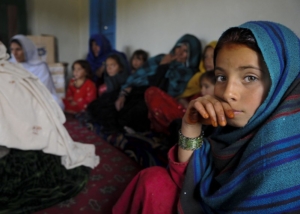International Women’s Day Marches Zero in on Middle East Injustices
 On March 8, 2023, thousands of people around the world, especially women, gathered to recognize International Women’s Day. Considering the ongoing global struggle for women’s rights, many of 2023’s marches focused on the Middle East, specifically, Iran and Afghanistan.
On March 8, 2023, thousands of people around the world, especially women, gathered to recognize International Women’s Day. Considering the ongoing global struggle for women’s rights, many of 2023’s marches focused on the Middle East, specifically, Iran and Afghanistan.
Though first officially recognized by the United Nations in 1977, International Women’s Day emerged decades before, out of labor movements that took shape across North America and Europe around the turn of the 20th century. The movement has gained increased momentum over the years with the help of the U.N., which now offers four global conferences that center on supporting women’s rights and strengthening women’s political and economic presence.
The Current State of Women’s Rights in the Middle East
In recent months, Iran has seen growing protests for women’s rights. One of the main causes of recent public outrage in Iran is a string of poisonings of thousands of school-aged girls since November 2022. Though none of the poisonings have resulted in fatalities and Iran’s Interior Ministry has reported arrests in relation to the incidents, UNESCO has called for stronger action to protect the country’s girls and young women and ensure “their right to safe education.”
Interestingly, although Iran’s clerical leaders force women to cover their hair and dress conservatively in public, historically, the country’s religious groups have shown no clear objection to the education of girls and women, unlike in Afghanistan.
Between 2001 and 2018, there was a great increase in the number of women and girls enrolled in some form of education in Afghanistan. However, since the September 2021 postponement of the return to school for all Afghan girls over the age of 12, 1.1 million females have been indefinitely denied access to formal education. UNESCO reports that 80%, or 2.5 million, Afghan women and girls are currently out of school as a result of the postponement, compounding the some 30% of Afghan girls who have never entered the education system at all. According to Roza Otunbayeva, head of the U.N. Assistance Mission in Afghanistan, “Afghanistan under the Taliban remains the most repressive country in the world regarding women’s rights, and it has been distressing to witness their methodical, deliberate, and systematic efforts to push Afghan women and girls out of the public sphere.”
Looking Ahead for Women
As recent developments show, a lot more must be done to support girls’ and women’s rights in Iran and Afghanistan. Still, there are signs of progress and hope. For instance, in Afghanistan, numerous female-led local NGOs have persisted in working to help repressed women and children across the country despite a recent Taliban decree prohibiting Afghan women from working for NGOs. Their efforts have coincided with those of the Women’s Foreign Policy Group and the Center for Human Rights in Iran, which, in 2022, “published hundreds of articles on human rights issues and press releases on urgent developments, all in both English and Persian, directly distributed to over 4,000 government, UN, NGO and media leaders worldwide.”
As these nonprofits work to secure equality and rights for the women of the Middle East — and women everywhere — the global unity demonstrated on International Women’s Day has inspired growing awareness of the need to address the injustices that women around the world face every day.
Photo: Flickr
